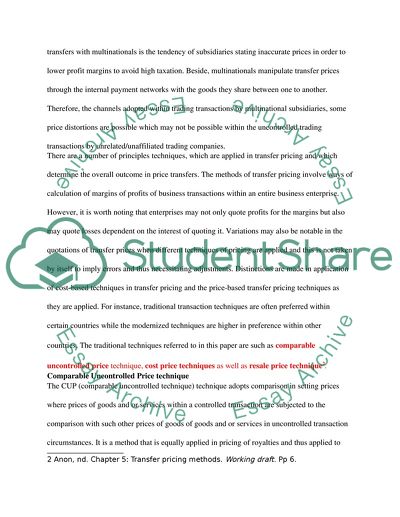Cite this document
(“Identify and explain the principal techniques of transfer pricing, and Essay”, n.d.)
Identify and explain the principal techniques of transfer pricing, and Essay. Retrieved from https://studentshare.org/finance-accounting/1631106-identify-and-explain-the-principal-techniques-of-transfer-pricing-and-comment-on-likely-developments-in-transfer-pricing-in-an-era-of-globalization
Identify and explain the principal techniques of transfer pricing, and Essay. Retrieved from https://studentshare.org/finance-accounting/1631106-identify-and-explain-the-principal-techniques-of-transfer-pricing-and-comment-on-likely-developments-in-transfer-pricing-in-an-era-of-globalization
(Identify and Explain the Principal Techniques of Transfer Pricing, and Essay)
Identify and Explain the Principal Techniques of Transfer Pricing, and Essay. https://studentshare.org/finance-accounting/1631106-identify-and-explain-the-principal-techniques-of-transfer-pricing-and-comment-on-likely-developments-in-transfer-pricing-in-an-era-of-globalization.
Identify and Explain the Principal Techniques of Transfer Pricing, and Essay. https://studentshare.org/finance-accounting/1631106-identify-and-explain-the-principal-techniques-of-transfer-pricing-and-comment-on-likely-developments-in-transfer-pricing-in-an-era-of-globalization.
“Identify and Explain the Principal Techniques of Transfer Pricing, and Essay”, n.d. https://studentshare.org/finance-accounting/1631106-identify-and-explain-the-principal-techniques-of-transfer-pricing-and-comment-on-likely-developments-in-transfer-pricing-in-an-era-of-globalization.


